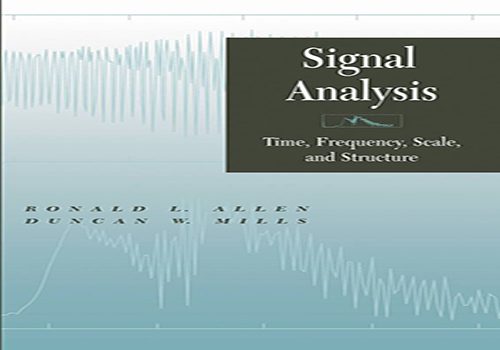دانلود کتاب SIGNAL ANALYSIS STRUCTURE
SIGNAL ANALYSIS STRUCTURE,TIME,SCALE, AND FREQUENCY
This text provides a complete introduction to signal analysis. Inclusion of fundamental ideas—analog and discrete signals, linear systems, Fourier transforms, and sampling theory—makes it suitable for introductory courses, self-study, and refreshers in the discipline. But along with these basics, Signal Analysis: Time, Frequency, Scale, and Structure gives a running tutorial on functional analysis—the mathematical concepts that generalize linear algebra and underlie signal theory. While the advanced mathematics can be skimmed, readers who absorb the material will be prepared for latter chapters that explain modern mixed-domain signal analysis: Short-time Fourier (Gabor) and wavelet transforms. Quite early in the presentation, Signal Analysis surveys methods for edge detection, segmentation, texture identification, template matching, and pattern recognition. Typically, these are only covered in image processing or computer vision books. Indeed, the fourth chapter might seem like a detour to some readers. But the techniques are essential to one-dimensional signal analysis as well.
The goal of signal analysis is to arrive at a structural description of a signal so that later high-level algorithms can interpret its content. This differs from signal processing per se, which only seeks to modify the input signal, without changing its fundamental nature as a one-dimensional sequence of numerical values. From this viewpoint, signal analysis stands within the scope of artificial intelligence. Many modern technologies demand its skills. Human–computer interaction, voice recognition, industrial process control, seismology, bioinformatics, and medicine are examples. Signal Analysis provides the abstract mathematics and functional analysis which is missing from the backgrounds of many readers, especially undergraduate science
and engineering students and professional engineers.
Ronald L. Allen
Duncan W. Mills



